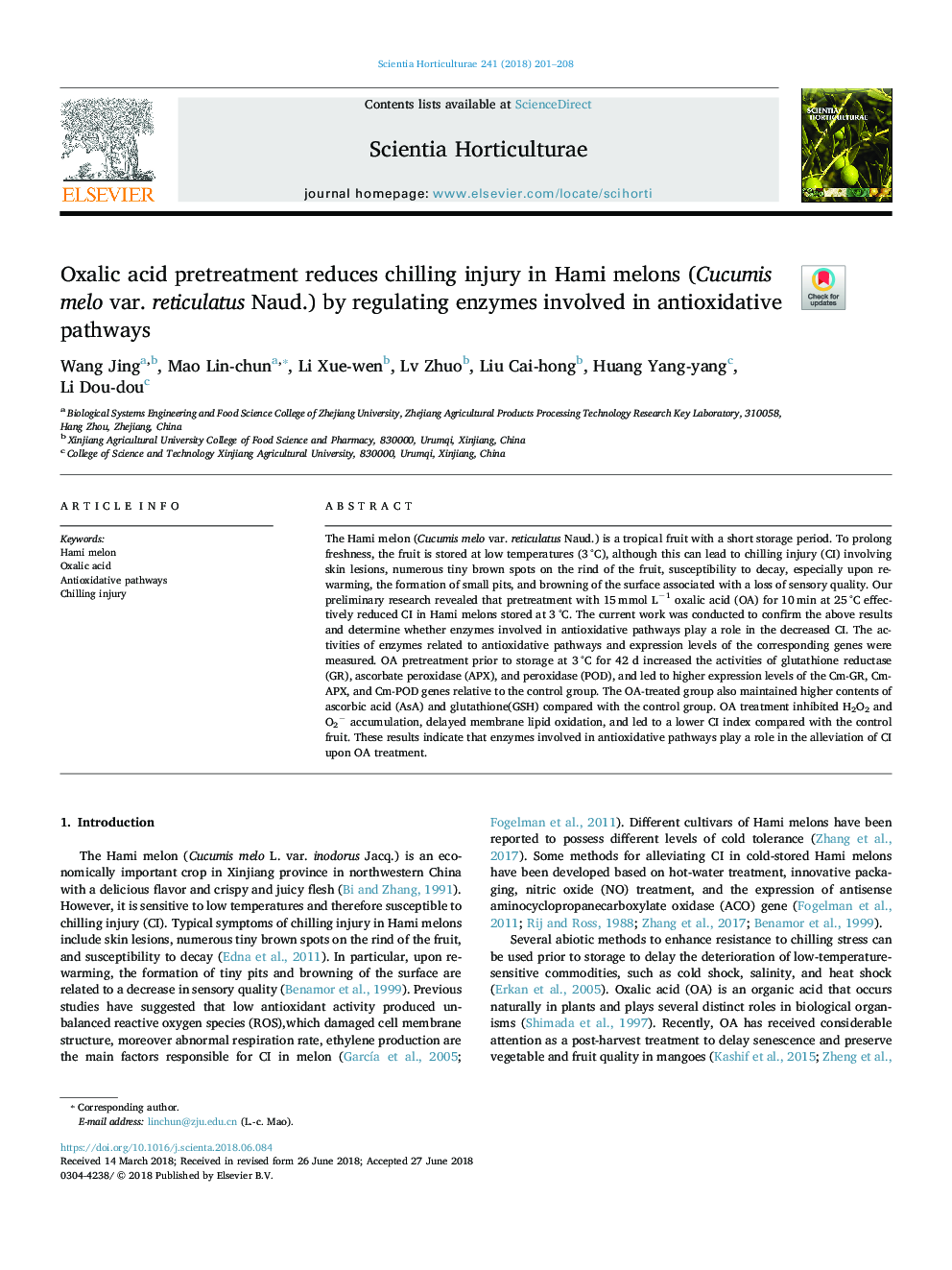| Article ID | Journal | Published Year | Pages | File Type |
|---|---|---|---|---|
| 8892342 | Scientia Horticulturae | 2018 | 8 Pages |
Abstract
The Hami melon (Cucumis melo var. reticulatus Naud.) is a tropical fruit with a short storage period. To prolong freshness, the fruit is stored at low temperatures (3â¯Â°C), although this can lead to chilling injury (CI) involving skin lesions, numerous tiny brown spots on the rind of the fruit, susceptibility to decay, especially upon rewarming, the formation of small pits, and browning of the surface associated with a loss of sensory quality. Our preliminary research revealed that pretreatment with 15â¯mmol Lâ1 oxalic acid (OA) for 10â¯min at 25â¯Â°C effectively reduced CI in Hami melons stored at 3â¯Â°C. The current work was conducted to confirm the above results and determine whether enzymes involved in antioxidative pathways play a role in the decreased CI. The activities of enzymes related to antioxidative pathways and expression levels of the corresponding genes were measured. OA pretreatment prior to storage at 3â¯Â°C for 42 d increased the activities of glutathione reductase (GR), ascorbate peroxidase (APX), and peroxidase (POD), and led to higher expression levels of the Cm-GR, Cm-APX, and Cm-POD genes relative to the control group. The OA-treated group also maintained higher contents of ascorbic acid (AsA) and glutathione(GSH) compared with the control group. OA treatment inhibited H2O2 and O2â accumulation, delayed membrane lipid oxidation, and led to a lower CI index compared with the control fruit. These results indicate that enzymes involved in antioxidative pathways play a role in the alleviation of CI upon OA treatment.
Keywords
Related Topics
Life Sciences
Agricultural and Biological Sciences
Horticulture
Authors
Wang Jing, Mao Lin-chun, Li Xue-wen, Lv Zhuo, Liu Cai-hong, Huang Yang-yang, Li Dou-dou,
